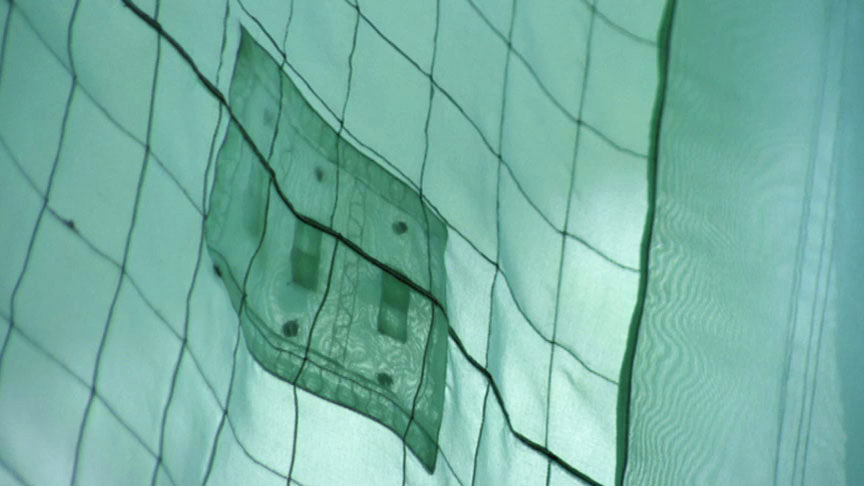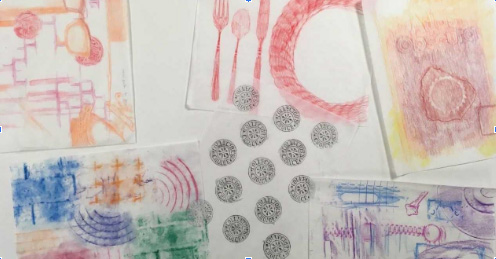
Production still from the Art in the Twenty-First Century Season 2 episode, Place. © Art21, Inc. 2019.
In the fall of 2018, there was a wonderful exhibition at the Frist Art Museum in Nashville, Do Ho Suh: Specimens, in which the artist, Do Ho Suh, used transparent cloth to recreate items from his home, such as a fire extinguisher and stove. The results are beautiful, ethereal objects. In the show, there were also works from the artist’s “Rubbing/Loving” project, in which he covered the interior of his New York City apartment with paper and made pencil rubbings of each room, including every detail. Suh wanted to remember a place where he had lived for many years; the project gave the artist a shell of the living space to take with him.
I enjoyed the beauty and process of the work, but my close friend and educator colleague, Erin, had a deeper reaction to the exhibition. As she viewed the show and began to talk about it, her eyes began to tear. She was moved by the artist’s connection with place and home. She said, “I often have an intense emotional reaction to art because it’s pure. It’s an absolute distillation or crystallization of something that couldn’t be put into words.”
Everybody reacts differently to art. Erin’s response made me think about my students’ art-viewing experiences and how I could create a classroom framework that might lead them to have emotional connections with art. I began by asking a class of second-year art students, “Have you ever cried when looking at art?” A few said yes, and some attested that art doesn’t have to have a sad message to make them cry, that visual sensations alone can evoke emotions.
One student, Seth, wrote about images of works from the exhibition Order and Disorder by the artist Alighiero Boetti, which he had seen in my classroom: “It was very moving, trying to find the disorder in all the order…some of the deeper meanings can make me feel emotional.” Another student, Ben, talked about a Matthew Ritchie video installation that we viewed in class last year: “It was surreal. I felt like I was floating but also still. There was beauty in the unknown.” These written responses were a beginning, to get them to think about their emotional reactions to the art.
I came across an online article about the recent exhibition at the Tate Modern, Tania Bruguera: 10,148,451. Basically the show asked: Can you make someone—force them to—feel empathy? The artist, Bruguera, wanted viewers to think about migration throughout the world and the resulting deaths that occur. Using a large portrait of an immigrant in London covered by a heat-sensitive pad on the floor of the museum’s enormous Turbine Hall, Bruguera’s piece required viewers to participate to reveal the image, by standing or lying on the floor so that their body heat would make the portrait appear. The artwork also included a room with an organic compound in the air that induced tears.
In the classroom, questions, conversations, and making art gave students the space to consider how art can move us emotionally.
This work by Bruguera was the perfect catalyst to prompt students to consider having emotional responses to art. I assigned my students to read the article about Bruguera’s show. One response, from Sofie, was: “Her work challenges the audience and the boundaries of what art can be. Both the crying room and the portrait are there not just to be looked at and appreciated but also to make the viewer think…It shows how art is not just an outlet for creativity but also a medium for making change.” Another comment, from Chase: “My first impression was how powerful it was, that she could make people completely reconsider what their emotions mean…The piece with the thermal floor puts you right in the middle of the message.”
Inspired by the work of Do Ho Suh, I gave the class a take-home assignment: to choose an object or objects that have personal meaning and make rubbings of them to create a design. The resulting works were beautiful and telling, and I hope this art-making project led the students to appreciate Suh’s work on a deeper level. In the classroom, questions, conversations, and making art have gave students the space to consider how art can move us emotionally. With more examples of artists and their works, I plan to continue with my students this consideration of our emotional reactions to art.
Powered by Finanznachrichten



